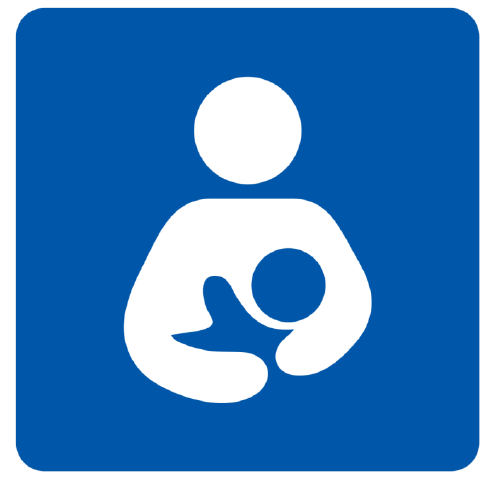
With estimated maternal mortality rates exceeding 1000 deaths per 100,000 live births, infant mortality rates exceeding 100 deaths per 1000 live births and under-5 mortality rates exceeding 150 deaths per 1000 live births in 2010, the rates of maternal, new-born and child mortality in some OIC member countries are amongst the highest in the world.
Improving the health of mothers, new-borns and children and reducing the number of preventable deaths are, therefore, identified as among the top priorities for collective actions. In this respect, special efforts are needed to improve the quality and availability of health services including antenatal and postnatal care, safer deliveries, care for new-borns and infants, better nutrition, and routine immunization against preventable diseases.
There are also huge opportunities for accelerating progress in the member countries. There is evidence on implementing country-tailored cost effective interventions for reproductive, maternal, new-born and child health, and on impact of the interventions on maternal and child health.
There are important country success stories within the OIC countries in implementing these interventions and delivery strategies. For example, Egypt has achieved universal coverage with the integrated management of childhood illnesses and high coverage of maternal health interventions (WHO/ EMRO, 2012). Iran has scaled up primary care for maternal, new-born and child health building on the success of community health workers.
The progress made in OIC countries in maternal and child survival over time reflect the successful interventions across a range of social determinants of health, such as female education, empowerment, poverty alleviation, investments in health systems and good governance. Yet in some countries, especially those with high mortality rates, implementation strategies remain limited and ineffective due, in part, to inadequate political support and leadership, restricted and unequal access to care, weak health systems, low workforce capacities and inadequate ability to monitor progress and track results and resources.
The challenge now facing the high-burden OIC countries is how to achieve universal coverage of effective interventions while optimizing investments and enhancing accountability to improve the health of women and children.
In what follows, different aspects of maternal, new-born and child health have been investigated to identify potential remedies and areas of cooperation.
Antenatal, Delivery and Postnatal Care
Antenatal Care Coverage
According to the latest data available during the period 2000-2010, around 77% of total pregnant women in the OIC member countries benefited from antenatal care services at least once during the pregnancy, whereas only 38% of total pregnant women benefited from recommended four antenatal check-ups (WHO, 2012a).
In both cases, the OIC average remained below the world average and average of the developing countries. 18 member countries registered antenatal care coverage rate of less than 50%. In 7 out of these 18 members, antenatal care coverage remained less than 20%. Along the continuum of care, antenatal care coverage has similar challenges with other components that are influenced by supply and demand: general health system weaknesses and social, economic, and cultural barriers. Human resources are also a major challenge.
Deployment of staff to rural areas can be a real difficulty, particularly where there are no economic or career incentives to deploy and retain staff in less favourable conditions.
Births Attended by Skilled Health Personnel
OIC member countries registered an increase in the proportion of total births attended by skilled personnel from 45% in 1990-1999 to 56% in 2000-2010 (WHO, 2012a). However, despite this positive trend, OIC averages remained well below the averages of the world, developed, and developing countries during the period 2000-2010.
In 14 member countries, less than 50% of total pregnant women received skilled health care during birth in the same period. In planning a strategy for the provision of skilled attendants for all pregnant women and their new-borns, the following five factors are especially important: the geographical diversity; the types of health care professionals currently fulfilling the role of the skilled attendant; the structure of the health system; the special needs of women with underlying health conditions, and monitoring of the existing situation.
Maternal Mortality
Globally, an estimated 287 000 maternal deaths occurred in 2010 – a decline of 47% from levels in 1990. OIC member countries witnessed some improvement in maternal health conditions and maternal mortality rate (MMR) declined to 330 deaths (per 100,000 live births) in 2010 (WHO, 2012a).
However, it is well above the world average (211) and average of non-OIC developing countries (178). Disparity exists within and across countries and regions. In 2010, almost 28% of all maternal deaths in OIC countries were only in Nigeria with more than 39,000 deaths. A total of 20 OIC countries had high MMR (defined as MMR ≥300 maternal deaths per 100,000 live births) in 2010. Of these countries, Chad and Somalia had extremely high MMRs (≥1000 maternal deaths per 100,000 live births) at 1100 and 1000, respectively. The other five highest MMR countries were: Sierra Leone (890), Guinea-Bissau (790), Sudan (730), Cameroon (690) and Nigeria (630).
Most maternal deaths could be prevented if women had access to professional health care services before and during pregnancy, childbirth and the postpartum period. This implies strengthening health systems.
Vaccination
Vaccination coverage trends in the world and OIC member countries continue to be positive. In 2010, 82% of infants in OIC member countries were immunized against measles, 83% against combined Diphtheria-Tetanus-Pertussis (DTP3), 84% against Haemophilus Influenza Type B (Hib), 89% against BCG and 85% against Polio (Pol3).
Similarly, coverage of hepatitis B (HepB) vaccination has reached to 82% in 2010 (WHO, 2012a). However, except for HepB and Pol3, immunization coverage among one year olds in OIC member countries remained below the world average and the average of other developing countries.
Insufficient social mobilization for adequate community demand for vaccination, poor management and logistics systems, inadequate funding for immunization activities in low income countries and new vaccines introduction in middle income countries as well as emergency and security situation in conflict areas are among the major challenges.
Nutrition
Low Birth-weight New-borns
The prevalence of low birth-weight (LBW) new-borns in OIC member countries remained higher than the world and developed countries averages. According to the latest data available during the period 2000-2010, about 14.3% of total births in member countries were registered as low birth weight.
During this period, OIC member countries accounted for around 29% of world and 31% of developing countries total births whereas around 31% of world and 32% of developing countries total underweight babies were born in the OIC member countries (WHO, 2012a). The highest prevalence of LBW new-borns was recorded in Mauritania (34%), followed by Pakistan (32%), and Niger (27%).
Recent research has shown that an infant whose mother was a LBW baby is four times more likely to have a LBW baby; the likelihood is six times greater in the case of an LBW father. Therefore, preventing LBW new-borns becomes important for future generations as well. LBW births constitute a major health problem for the infants, their families, and the society.
The associated costs include not only the initial hospital costs for mother and infant, but also the long-term costs associated with neuro-developmental impairments, learning disabilities, and the lifespan curtailing medical disorders.
Risk factors associated with LBW include socio-economic disadvantage, poor health and nutrition of women during pregnancy, smoking while pregnant, consumption of drugs and alcohol while pregnant and experiencing abuse while pregnant. It has been demonstrated that maternal smoking is one of the most modifiable risk factors to prevent LBW babies.
Infants Exclusively Breastfed
In OIC member countries, 30% of new-borns were exclusively breastfed for the first six months of their life during 2000-2010, while worldwide slightly more than one third (36%) of new-borns were breastfed. At the individual country level, prevalence of breastfeeding ranged from a low of 1% in Djibouti to a high of 60% in Uganda (WHO, 2012a).
Prevalence of breastfeeding remained less than 15% in 15 member countries. Studies have shown that breastfed children have at least six times greater chance of survival in the early months than non-breastfed children.
In this regard, national infant and young child feeding policies and strategy frameworks should be developed and implemented. Programme plans should also be developed and implemented to operationalize these strategies.
Stunted, Underweight and Overweight Children
Prevalence of stunting, underweight and overweight in children under the age of five are very important indicators for measuring long term nutritional imbalances and malnutrition in a population. The prevalence of stunting, underweight and overweight in OIC countries was 36%, 22% and 8% in 2000-2011, respectively. In non-OIC developing countries, these shares were 31%, 22%, and 5% during the same period, respectively.
Among the OIC countries, more than 50% children under the age of five were stunted in Afghanistan (59%), Yemen (58%) and Niger (55%). Underweight prevalence also remained highest in Yemen (43%) and Bangladesh (41%). Overweight prevalence was highest in Albania (23%) and Libya (22%). While the ratio of underweight children is above the world average of 21% in 15 OIC countries, the ratio of stunted children is above the world average of 32% in 22 OIC countries. On the other hand, in 30 OIC countries the ratio of overweight children is above the world average of 6% (WHO, 2012a).
Children who are stunted are at a greater risk of having difficulty learning, playing, engaging in normal childhood activities and being productive members of society later in life. Undernourished children are also more susceptible to frequent and repeated disease and illness due to a weakened immune response, as well as at a greater risk of becoming overweight or obese later in life.
Undernutrition from micronutrient deficiencies, or ‘hidden hunger’, also affects over 2 billion people globally and can lead to reduced growth and cognitive development, birth defects, blindness, and overall poor health. Vitamin A deficiency, iron deficiency anaemia and iodine deficiency disorders are among the most common forms of micronutrient malnutrition.
Infant and Child Mortality
Infant Mortality
In 2010, one in every 18 children died before their first birthday in OIC countries compared to one in 23 children in developing countries, one in 25 children in world and one in 211 children in developed countries. The average infant mortality rate in OIC countries has declined from 84 deaths per 1000 live births in 1990 to 56 in 2010. In 2010, infant mortality rate ranged between 63 and 92 deaths per 1000 live births in 15 member countries (SESRIC, 2011).
Since more than one third of all child deaths occur within the first month of life, providing skilled care to mothers during pregnancy, as well as during and after birth, greatly contributes to child survival.
Under-5 Child Mortality
In OIC member countries, under-5 child mortality rate has fallen from 126 deaths per 1000 live births in 1990 to 82 in 2010. Despite this improvement, one in 12 children in OIC member countries die before their fifth birthday compared to one in 16 children in developing countries and one in 18 children in the world (SESRIC, 2011).
In 2010, three OIC member countries were the top three countries with highest under-5 child mortality rate in the world. Somalia was first, followed by Mali and Burkina Faso.
It is shown that more than 60% of all under-five child deaths can be avoided with proven, low-cost preventive care and treatment. Preventive care includes continuous breast-feeding, vaccination, and adequate nutrition. It is essential to improve capabilities in identifying adjustable risk factors and determining the best strategies for prevention.
There is need for more investment and better trained and equipped health workers to reach the majority of children who today do not have access to basic health care. Training families and communities in how best to bring up their children healthily and deal with sickness when it occurs carry also importance in reducing child mortality.

